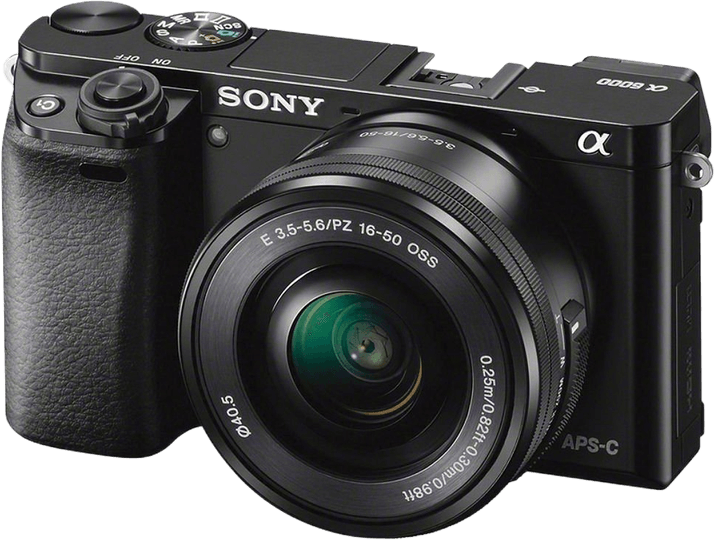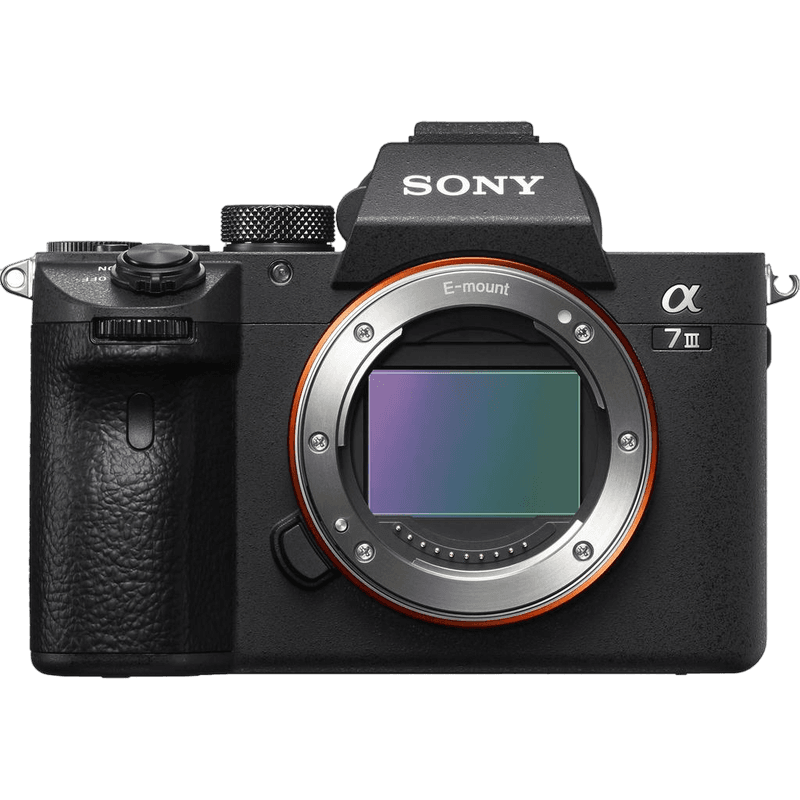Sony a6000 vs a7 III Comparison
Sony a6000

Sony a7 III

The Sony a7 III takes the lead with a score of 80/100, outperforming the Sony a6000 which holds a score of 57/100. Both cameras are mirrorless and have a similar announcement date, with the a6000 being released in 2014 and the a7 III in 2018. They share a common trait in their compact size, but the a7 III is slightly larger and heavier at 127 x 96 x 74mm and 650g, compared to the a6000’s 120 x 67 x 45mm and 344g.
The a7 III’s higher score reflects its superior performance, boasting advanced features and better image quality. However, the a6000 has the advantage of being more affordable with a launch price of $799, compared to the a7 III’s $2000 price tag.
Considering the specifications, the Sony a7 III is the better camera, but the Sony a6000 may be a more budget-friendly option for those seeking a compact mirrorless camera.
Sony a6000 vs a7 III Overview and Optics
The Sony a7 III emerges as the winner in the optics comparison with a score of 81/100, while the Sony a6000 trails behind at 67/100. Both cameras share some key specifications, such as a CMOS sensor, Bionz X processor, and similar megapixel counts (24.2 for the a7 III and 24.3 for the a6000). Additionally, they both have compatible lens mounts, with the a7 III using Sony FE and the a6000 using Sony E.
The Sony a7 III outperforms the a6000 in several aspects. It boasts a full-frame sensor, which provides a larger surface area for capturing light, resulting in better image quality and improved low-light performance. This advantage is further supported by a higher DXOMARK sensor score of 96, compared to the a6000’s score of 82. The a7 III also features built-in image stabilization, which minimizes camera shake and allows for sharper handheld shots.
On the other hand, the Sony a6000 has a faster shooting speed of 11 frames per second, compared to the a7 III’s 10 frames per second. This slight advantage may prove beneficial for capturing fast-moving subjects or action photography. However, the a6000’s smaller APS-C sensor size and lack of image stabilization may offset this advantage in certain situations.
Given these points, the Sony a7 III stands out as the better choice for photographers seeking superior image quality, low-light performance, and image stabilization. The Sony a6000, while offering a marginally faster shooting speed, falls short in these critical areas, making the a7 III the clear winner in this optics comparison.
Sony a6000 vs a7 III Video Performance
The Sony a7 III wins the video capabilities comparison with a score of 56/100, while the Sony a6000 scores 0 points. Both cameras share some common specifications, such as no built-in time-lapse functionality. However, the Sony a7 III outperforms the a6000 in several aspects, while the a6000 has one advantage.
The Sony a7 III has a max video resolution of 4K, with video dimensions of 3840 x 2160. This higher resolution provides better video quality and more details compared to the a6000’s Full HD resolution with dimensions of 1920 x 1080. The a7 III captures more lifelike and vibrant footage, making it a superior choice for videographers.
On the other hand, the Sony a6000 has a max video frame rate of 60fps, compared to the a7 III’s 30fps. This higher frame rate allows the a6000 to capture smoother motion and is useful for creating slow-motion effects. However, this advantage is limited by the a6000’s lower resolution, which may not be as appealing to professional videographers.
Considering the video capabilities of both cameras, the Sony a7 III is the clear winner due to its 4K resolution, which provides better video quality and detail. The a6000’s higher frame rate is an advantage, but it is not enough to outweigh the benefits of the a7 III’s superior resolution. Therefore, videographers seeking the best video performance should opt for the Sony a7 III.
Sony a6000 vs a7 III Features and Benefits
The Sony a7 III outperforms the Sony a6000 with a feature score of 81/100, compared to the a6000’s 41/100. Both cameras share some specifications, including a 3-inch screen size, 921,600-dot screen resolution, flip screen, no GPS, and WIFI capabilities.
The winning camera, the Sony a7 III, surpasses the a6000 with its touchscreen feature and Bluetooth connectivity. The touchscreen allows for easier navigation and quicker adjustments, while the Bluetooth connection enables seamless transfer of files and remote control capabilities. These additional features make the Sony a7 III a more versatile and user-friendly option.
The Sony a6000, on the other hand, lacks a touchscreen and Bluetooth connection. Although not necessarily better in these aspects, the a6000 is still a capable camera that offers a flip screen and WIFI capabilities like its counterpart, the a7 III. For those who prioritize budget or do not require a touchscreen and Bluetooth, the Sony a6000 may still be a suitable choice.
In comparing the features of these two cameras, the Sony a7 III proves to be the superior option due to its touchscreen and Bluetooth capabilities. However, the Sony a6000 remains a viable alternative for those who may not require these additional features. Ultimately, the choice between the two depends on the individual’s preferences and requirements.
Sony a6000 vs a7 III Storage and Battery
The Sony a7 III emerges as the superior camera in terms of storage and battery, scoring 68/100, a significant 47-point lead over the Sony a6000’s 21/100. Both cameras share some storage specifications, accepting SD/SDHC/SDXC and Memory Stick Pro Duo/Pro-HG Duo cards. However, the a7 III offers dual memory card slots, doubling the storage capacity and providing more flexibility compared to the a6000’s single slot.
In terms of battery life, the a7 III excels with 750 shots per charge, using the NP-FZ100 battery type. This is more than double the a6000’s 360 shots, powered by an NP-FW50 battery. Unfortunately, neither camera offers USB charging capabilities.
While the a6000 falls short in these aspects, it is important to consider the overall performance, features, and price when choosing the right camera for one’s needs. The Sony a7 III stands out in storage and battery performance, making it a more reliable option for extended shooting sessions and demanding photography tasks.
Sony a6000 vs a7 III – Our Verdict
Are you still undecided about which camera is right for you? Have a look at these popular comparisons that feature the Sony a6000 or the Sony a7 III:
